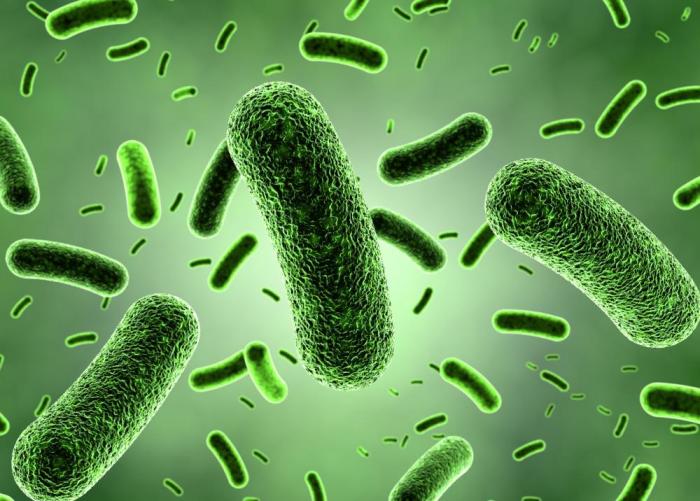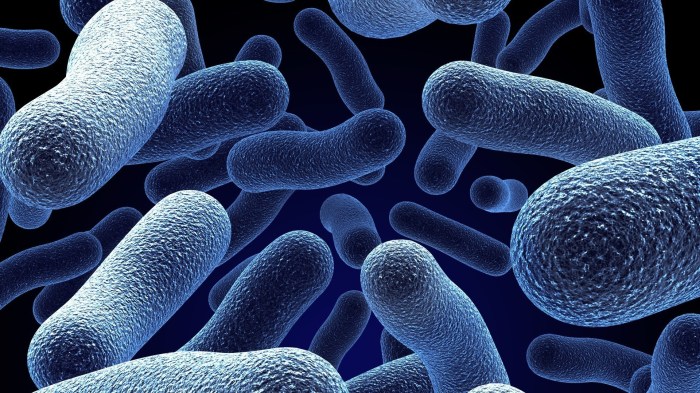Single cell organism crossword clue – Embark on an intellectual journey into the realm of single-celled organisms, where we decipher their enigmatic existence through the lens of a crossword clue. This discourse delves into the captivating world of these microscopic marvels, exploring their unique characteristics, diverse forms, and profound ecological significance.
Single-celled organisms, the building blocks of life, stand as testament to the intricate tapestry of nature’s designs. Their simplicity belies a remarkable complexity, revealing a fascinating interplay between structure and function, reproduction and survival.
Definition of Single Cell Organism

A single-celled organism, also known as a unicellular organism, is an organism that consists of only one cell, in contrast to a multicellular organism that consists of multiple cells.
Single-celled organisms are the simplest and most primitive form of life and are found in all environments on Earth. They are typically very small, ranging in size from 1 to 100 micrometers, and have a simple structure.
Characteristics
Single-celled organisms are characterized by their ability to carry out all the functions necessary for life within a single cell. These functions include:
- Reproduction
- Metabolism
- Response to stimuli
- Movement
Single-celled organisms differ from multicellular organisms in that they do not have specialized cells or tissues. Instead, all of the functions necessary for life are carried out by the single cell.
Examples
Some common examples of single-celled organisms include:
- Bacteria
- Protozoa
- Algae
- Yeast
Types of Single Cell Organisms

Single-celled organisms, also known as unicellular organisms, exhibit a diverse range of nutritional modes and strategies for obtaining energy and nutrients. These organisms can be broadly classified into two primary groups based on their nutritional mode: autotrophs and heterotrophs.
Autotrophs
Autotrophs are single-celled organisms that can synthesize their own food using inorganic molecules. They utilize energy from sunlight or chemical reactions to convert carbon dioxide and water into organic compounds, such as glucose, through the process of photosynthesis or chemosynthesis.
Examples of autotrophic single-celled organisms include:
- Cyanobacteria (blue-green algae): Photosynthetic bacteria that play a significant role in aquatic ecosystems.
- Euglena: A unicellular organism that can switch between autotrophic and heterotrophic modes of nutrition depending on environmental conditions.
- Diatoms: Microscopic algae that form the base of many marine food chains.
Heterotrophs
Heterotrophs are single-celled organisms that cannot synthesize their own food and must obtain organic compounds from other organisms. They rely on consuming pre-formed organic matter, either as predators, parasites, or decomposers. Examples of heterotrophic single-celled organisms include:
- Amoeba: A predatory organism that engulfs other microorganisms.
- Paramecium: A free-living ciliated protozoan that feeds on bacteria and other microorganisms.
- Yeast: A fungus that can ferment sugars to produce energy and alcohol.
Structure and Function of Single Cell Organisms

Single-celled organisms, also known as unicellular organisms, are the simplest form of life and the building blocks of all living things. They are self-contained entities capable of carrying out all the essential functions of life within a single cell.
The structure of a single-celled organism is relatively simple compared to multicellular organisms. It consists of a cell membrane, cytoplasm, and nucleus.
Cell Membrane
The cell membrane is a thin, flexible layer that surrounds the cell and acts as a barrier between the cell and its external environment. It regulates the movement of substances into and out of the cell, maintaining the cell’s internal environment.
Cytoplasm
The cytoplasm is the jelly-like substance that fills the cell and contains all the organelles necessary for the cell’s functioning. These organelles include ribosomes, mitochondria, endoplasmic reticulum, and Golgi apparatus.
Ribosomes
Ribosomes are small structures responsible for protein synthesis. They read the genetic code in messenger RNA (mRNA) and assemble amino acids into proteins.
Mitochondria
Mitochondria are often referred to as the “powerhouses of the cell” because they generate energy in the form of ATP through cellular respiration.
Endoplasmic Reticulum, Single cell organism crossword clue
The endoplasmic reticulum is a network of membranes that folds and transports proteins and lipids. It also plays a role in detoxifying the cell.
Golgi Apparatus
The Golgi apparatus modifies, sorts, and packages proteins and lipids for secretion or storage.
Nucleus
The nucleus is a membrane-bound organelle that contains the cell’s genetic material, DNA. DNA is organized into chromosomes, which carry the instructions for all the cell’s activities.
The structure of a single-celled organism is closely related to its function. The cell membrane allows the cell to interact with its environment, while the cytoplasm and its organelles provide the necessary machinery for the cell’s metabolism, growth, and reproduction.
Reproduction and Life Cycle of Single Cell Organisms

Single cell organisms, also known as unicellular organisms, are capable of reproducing asexually through various methods, including binary fission, budding, and spore formation. Binary fission is the most common method of reproduction, where the parent cell divides into two identical daughter cells.
Budding involves the formation of a small outgrowth or bud on the parent cell, which eventually detaches and develops into a new individual. Spore formation is a process where the parent cell produces specialized cells called spores that can survive harsh environmental conditions and germinate into new individuals when conditions are favorable.The
life cycle of a typical single cell organism involves the following stages: growth, reproduction, and death. During the growth stage, the cell increases in size and accumulates nutrients. The reproduction stage involves the production of new individuals through the aforementioned methods.
The death stage occurs when the cell undergoes apoptosis or programmed cell death.Environmental factors such as temperature, pH, and nutrient availability can significantly affect the reproduction and life cycle of single cell organisms. Optimal conditions promote rapid growth and reproduction, while adverse conditions can inhibit these processes.
Understanding the environmental factors that influence single cell organisms is crucial for predicting their population dynamics and ecological roles in various ecosystems.
Ecological Significance of Single Cell Organisms

Single cell organisms play a crucial role in maintaining the balance and functioning of ecosystems. Their ecological significance extends from nutrient cycling and decomposition to contributing to the food chain and ecosystem stability.
Role in Nutrient Cycling and Decomposition
Single cell organisms, particularly bacteria and fungi, are essential decomposers in ecosystems. They break down organic matter, such as dead plants and animals, into simpler compounds that can be utilized by other organisms. This process releases nutrients, such as nitrogen, phosphorus, and carbon, back into the environment, making them available for primary producers like plants.
Contribution to the Food Chain and Ecosystem Balance
Single cell organisms form the base of many food chains, serving as a primary food source for a variety of organisms, including zooplankton, small fish, and larger predators. By consuming bacteria and other microorganisms, these organisms help control their populations, preventing excessive growth and maintaining ecosystem balance.
Potential Applications in Biotechnology and Medicine
Single cell organisms have significant potential in biotechnology and medicine. Their ability to produce various enzymes, antibiotics, and other bioactive compounds has led to their use in industrial processes and the development of novel pharmaceuticals. Additionally, single cell organisms are valuable tools for studying cellular processes and genetic engineering, contributing to advancements in biomedical research.
Essential FAQs: Single Cell Organism Crossword Clue
What is the defining characteristic of a single-celled organism?
A single-celled organism is defined by its unicellular nature, meaning it consists of only one cell that performs all essential life functions.
How do single-celled organisms obtain energy?
Single-celled organisms employ various nutritional modes to obtain energy, including autotrophy (synthesizing their own food through photosynthesis) and heterotrophy (consuming other organisms for sustenance).
What are some common examples of single-celled organisms?
Examples of single-celled organisms include bacteria, protozoa, and yeast, each exhibiting unique adaptations and ecological roles.

